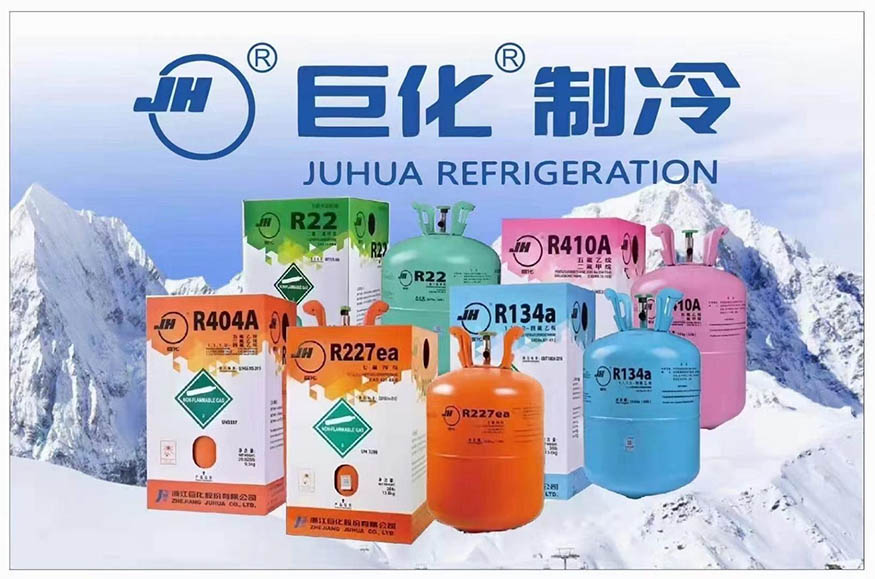R407F is a refrigerant developed by Honeywell. It is a blend of R32, R125 and R134a, and is related to R407C, but has a pressure which better matches R22, R404A and R507. Although R407F was originally intended as an R22 replacement it is now also used in supermarket applications where its GWP of 1800 makes it a lower GWP alternative to R22 which has a GWP of 3900. As is illustrated on the figure, R407F is based on the same molecules as and has a similar composition to R407C, and all valves and other control products which are approved for R22/R407C also works well with R407F.

Compressor selection:
This guideline for retrofitting or installing compressors in new equipment with our current range has been updated with technical recommendations for replacing R22 with potential blends available on the market such as R407F.
Valve selection:
When selecting a thermostatic expansion valve chose a valve which can be used for both R22 and R407C, since the vapour pressure curve matches these valves better than the valves only usable with R407C. For correct superheat setting, the TXVs must be re-adjusted by "opening" by 0.7K (at -10C). Capacities of thermostatic expansion valves with R-407F will be approximately 10% larger than the capacity for R-22.
Changeover procedure:
Before starting the changeover, at least the following items should be readily available: ✮ Safety glasses
✮ Gloves
✮ Refrigerant service gauges
✮ Electronic thermometer
✮ Vacuum pump capable of pulling 0.3 mbar
✮ Thermocouple micron gauge
✮ Leak detector
✮ Refrigerant recovery unit including refrigerant cylinder
✮ Proper container for removed lubricant
✮ New liquid control device
✮ Replacement liquid line filter-drier(s)
✮ New POE lubricant, when needed
✮ R407F pressure temperature chart
✮ R407F refrigerant
1. Before starting the conversion, the system should be thoroughly leak tested with the R22 refrigerant still in the system. All leaks should be repaired before the R407F refrigerant is added.
2. It is advisable that the system operating conditions (particularly the suction and discharge absolute pressures (pressure ratio) and suction superheat at the compressor inlet) be recorded with the R22 still in the system. This will provide the base data for comparison when the system is put back into operation with the R407F.
3. Disconnect electrical power to system.
4. Properly remove the R22 and Lub. Oil from the compressor. Measure and note the amount removed.
5. Replace the liquid line filter-drier with one that is compatible with R407F.
6. Replace the expansion valve or power element to a model approved for R407C (only required when retrofitting from R22 to R407F).
7. Evacuate the system to 0.3 mbar. A vacuum decay test is suggested to assure the system is dry and leak free.
8. Recharge the system with R407F and POE oil.
9. Charge the system with R407F. Charge to 90% of the refrigerant removed in item 4. R407F must leave the charging cylinder in the liquid phase. It is suggested that a sight glass be connected between the charging hose and compressor suction service valve. This will permit adjustment of the cylinder valve to assure the refrigerant enters the compressor in the vapour state.
10. Operate the system. Record the data and compare to the data taken in item 2. Check and adjust the TEV superheat setting if necessary. Make adjustments to other controls as needed. Additional R407F may have to be added to obtain optimum system performance.
11. Properly label the components. Tag the compressor with the refrigerant used (R407F) and the lubricant used.
Post time: Apr-09-2022







